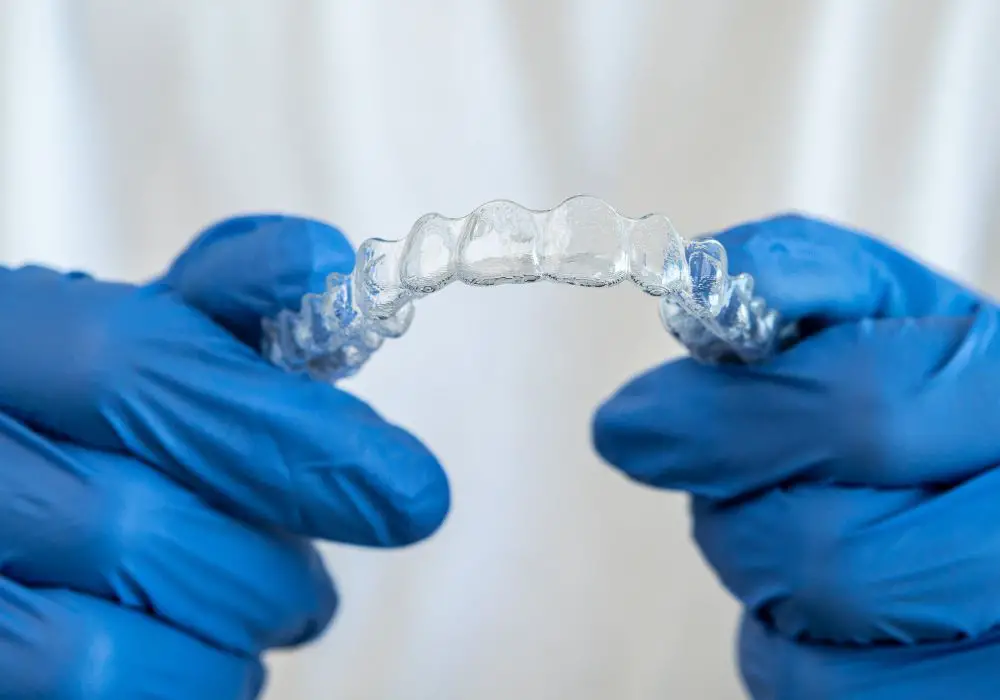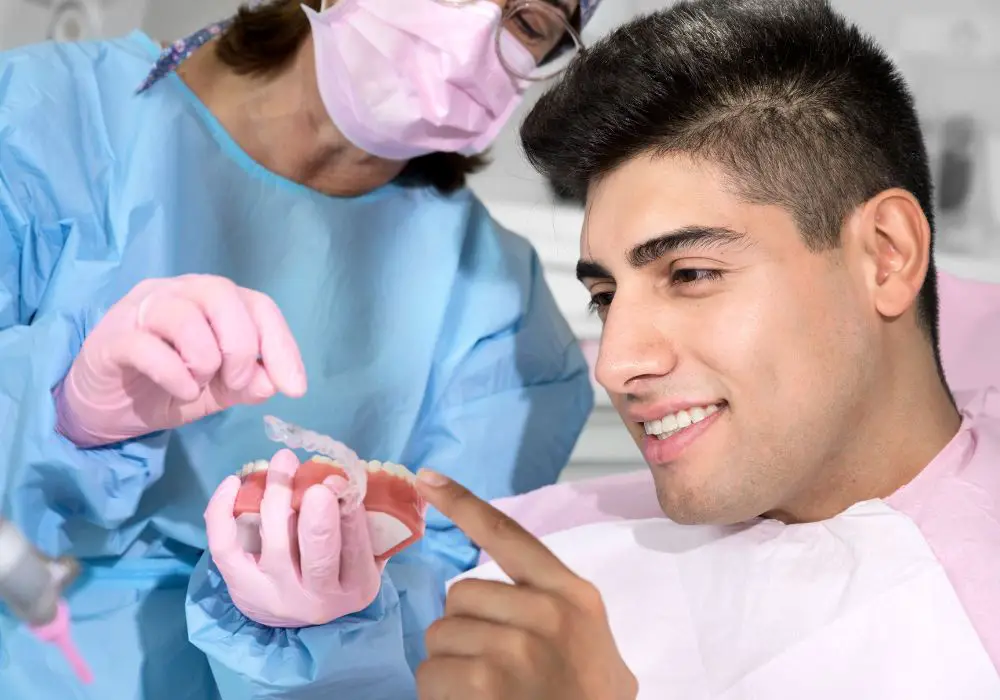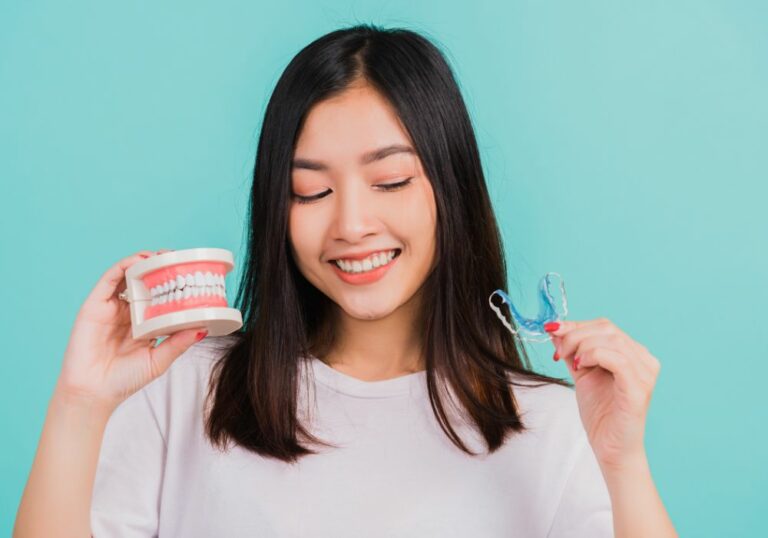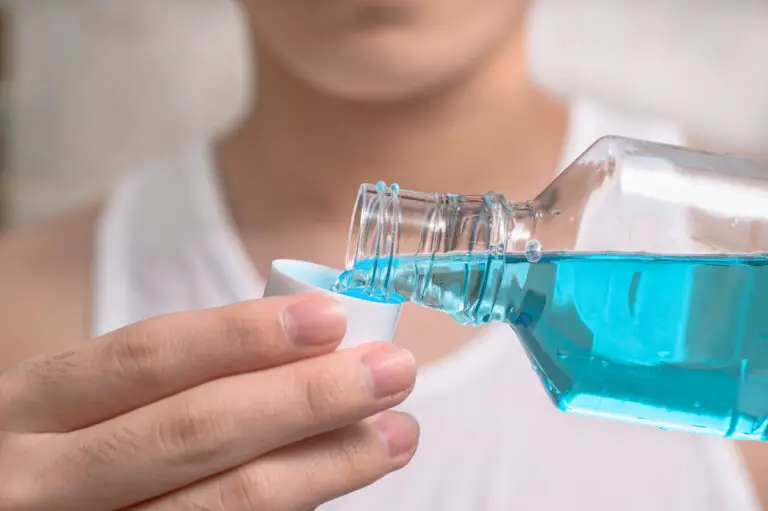Overview of Invisalign Treatment
Invisalign is a popular clear aligner treatment that uses a series of clear, removable aligners to gradually shift teeth into place over time. Unlike traditional metal braces, Invisalign aligners are nearly invisible, which makes them an attractive option for teens and adults who want to straighten their teeth discreetly.
During Invisalign treatment, patients wear a new set of custom-fit aligners about every 1-2 weeks. Each new set of aligners applies light, controlled forces to the teeth to incrementally move them into the desired position. In total, patients may go through between 12-48 aligner sets over the course of treatment, which averages 9-15 months for teens and 12-18 months for adults.
To hold the aligners firmly in place and prevent them from popping off while eating, drinking, and brushing, attachments are bonded to the teeth. Attachments act as handles for the aligners to grip onto. Let’s take a closer look at why attachments are needed and how they work during Invisalign treatment.
Why Are Attachments Used with Invisalign Aligners?
There are a few key reasons attachments are used with Invisalign:
To Provide Grip and Hold Aligners in Place
The smooth, glossy plastic of Invisalign aligners can slide over the natural surface of teeth. Attachments give the aligners something to grab onto and apply targeted pressure against so the aligners stay firmly in place.
Without attachments helping hold them steady, aligners would be prone to slipping off while eating, drinking, brushing, and going about normal daily activities.
To Help Specific Teeth Move Effectively
Attachments place force against targeted teeth that need extra help shifting into position. For example, attachments may be placed on front teeth needing rotation or back teeth that need to be tilted or tipped forward.
By bonding attachments to teeth requiring detailed movements, the aligners are better able to direct focused pressure and produce effective rotation, tipping, or straightening of those teeth.
To Anchor and Stabilize Teeth
In some cases, certain teeth may be used as anchors to hold other teeth in position while adjacent teeth shift and straighten. Attachments help keep anchor teeth from moving so alignment can progress as intended.
What Do Invisalign Attachments Look Like?
Invisalign attachments are tooth-colored blobs of dental composite material that are bonded to the center surface of teeth. They are shaped so the aligners can grip them and apply customized pressure to move teeth predictably.
Attachments are small and range in size from a half to a few millimeters wide and tall. Their tooth-like color makes them blend in discreetly against natural teeth.
How Are Invisalign Attachments Applied to Teeth?

attaching invisalign attachments is a quick and painless bonding process performed by a dentist or orthodontist. Here are the general steps:
Initial Consultation
The orthodontist will assess teeth, plan aligner treatment, and determine which teeth need attachments. A treatment simulation shows where each attachment will be placed.
Teeth Cleaning
Teeth are polished to remove any plaque and debris and create a clean bonding surface for attachments.
Bonding Solution Applied
The tooth surface is etched with an acidic gel to roughen it up, then rinsed and dried. A silicone positioning jig is placed over the teeth to guide attachment placement.
Attachment Bonding
The orthodontist applies a bonding agent to the prepared tooth surface. Next, a tiny dab of light-cured dental resin is placed on the tooth. The tooth-colored attachment is pressed into place over the resin, then hardened with a curing light.
Seamless Finish
Any excess resin is removed before the orthodontist double checks the smooth, flush fit of each attachment against teeth.
The entire bonding process takes around 30-60 minutes total to safely secure every attachment in its precise position on teeth.
How Many Attachments Are Needed for Invisalign?
The number of attachments required varies based on the complexity of each case and which teeth need extra force for proper movement. Here are some general guidelines:
- Mild to moderate alignment cases: Approximately 4-8 attachments
- More complex cases: Around 8-14 attachments
- Very advanced alignment challenges: 14 attachments or more
Back teeth that need rotational or tipping movements often need attachments, along with front teeth requiring rotation to straighten overlap or crowding. The orthodontist customizes attachment placement based on the movements needed to achieve each patient’s desired results.
Do Invisalign Attachments Affect Appearance?

One of the appeals of Invisalign over braces is improved aesthetics. The aligners themselves are nearly invisible when worn, and attachments are designed to be subtle and blend in with surrounding tooth surfaces. Their small size, natural tooth-color, and placement on the sides rather than fronts of teeth make them far less conspicuous than brackets and wires.
Still, some attachments may be slightly visible, especially on close inspection. Their visibility depends on factors like:
- Attachment placement – Front-facing attachments are more noticeable than those on sides of back teeth.
- Attachment size – Larger attachments are more obvious.
- Attachment color – Unnaturally white attachments stand out more against natural tooth shade.
- Gum and tooth color – Attachments blend better against lighter gums and teeth.
With proper placement, shaping, and shade-matching, attachments should be quite discreet. But those wanting absolute invisibility may wish to consider other clear aligner options without attachments.
Do Attachments Affect Sensation or Comfort in the Mouth?
New attachments may feel slightly unusual on the teeth for the first day or two as the tongue adjusts to the new sensation. Patients also need to take care not to dislodge attachments when removing aligners during the initial adjustment phase.
However, as patients acclimate over the first few days, attachments should not interfere with speech or comfort. The smooth composite material and tight fit to teeth mean attachments are smooth and flush against tooth surfaces, without any irritation of cheeks or gums. Any mild discomfort resolves quickly.
Proper oral hygiene is important for maintaining gum health. Brushing and flossing around attachments takes a little extra care initially. Using specialized tools like proxy brushes makes flossing easier.
How Are Invisalign Attachments Removed After Treatment?
Once teeth have moved into the final corrected alignment, the orthodontist removes any remaining attachments during a quick polishing appointment. The orthodontist uses a special instrument to gently pry off each attachment without damaging tooth enamel.
A polishing tool is then used to smooth out any remaining bonding material on teeth, leaving a clean, even surface. For a finishing touch, teeth may receive a whitening gel polish treatment to remove any glue residue and brighten tooth color. The tooth surfaces return to normal sensation and smoothness after attachment removal.
Maintaining Good Oral Hygiene with Attachments
Proper brushing and flossing are important during Invisalign treatment to prevent plaque buildup, tooth decay, and gum inflammation. However, attachments can make hygiene a little trickier by increasing places for plaque to hide. Here are some tips for maintaining good oral hygiene while wearing Invisalign aligners with attachments:
- Brush carefully: Use a soft-bristled brush and carefully clean around each attachment. Angling your brush helps dislodge plaque from attachment edges. An orthodontic toothbrush can help clean braces and attachments.
- Floss thoroughly: Floss at least once daily and gently work the floss under each side of every attachment. Use floss threaders if needed to maneuver floss beneath attachments.
- Rinse after eating: After eating, swish water around your mouth to help clear food debris. Remove aligners and brush any deposits from them.
- Clean aligners daily: Soak aligners in cleaning solution and brush them before inserting to prevent bacteria buildup.
- See your dentist: Visit your dentist for professional cleanings every 6 months to remove hardened plaque and tartar.
With diligent daily care, you can keep your teeth, gums, and aligners healthy while wearing Invisalign with attachments.

Frequently Asked Questions about Invisalign Attachments
How long do you have to wear attachments with Invisalign?
Attachments are bonded onto teeth at the very start of Invisalign treatment. They stay on your teeth for the entire duration of treatment until the aligners have finished shifting your teeth into proper position, which averages 12-18 months.
Do attachments stain or discolor teeth?
Attachments are made of tooth-colored bonding material designed to match surrounding tooth enamel shade. With good oral hygiene, attachments do not discolor or stain teeth. However, poor hygiene causing plaque buildup could potentially lead to white spot lesions around attachments over time.
Do attachments fall off or break during Invisalign treatment?
In rare instances, a small portion of an attachment may chip off or an entire attachment may detach from a tooth. This does not affect the alignment process, as long as enough of the attachment remains for the aligner to grip. If an attachment completely falls off, call your orthodontist to recement it so aligner treatment can stay on track.
Do attachments hurt or irritate the mouth?
When attachments are first placed, they may feel a bit unusual against the teeth for the first couple of days as your tongue adjusts. However, the smooth composite material does not poke or scratch the cheeks or lips. Any mild discomfort resolves quickly. Attachments should not cause pain if bonded and maintained properly.
Can you see Invisalign attachments?
Attachments are designed to be as discreet as possible. Their small size, tooth-like color, and placement on the sides of teeth helps minimize visibility. However, some attachments, especially on front teeth, may be faintly visible on very close inspection. Larger attachments or those placed towards tooth fronts tend to be more obvious than small, strategically positioned ones.
Do you need attachments if you only have minor tooth adjustments?
For simple minor alignment cases only requiring very slight tooth movements, attachments may not be necessary. However, most moderate to advanced cases involving detailed tooth movements like rotation will require attachments to help the aligners grip and shift teeth effectively. The orthodontist will determine how many attachments are needed based on your unique treatment plan.
Conclusion
Attachments play an important role during Invisalign treatment by anchoring aligners firmly onto teeth for improved grip and more controlled tooth movements. While attachments may take some adjustment initially and require diligent oral hygiene, they are an integral part of achieving successful alignment using clear Invisalign aligners. When properly placed and cared for, attachments are an effective and relatively discreet way to help straighten your smile.







